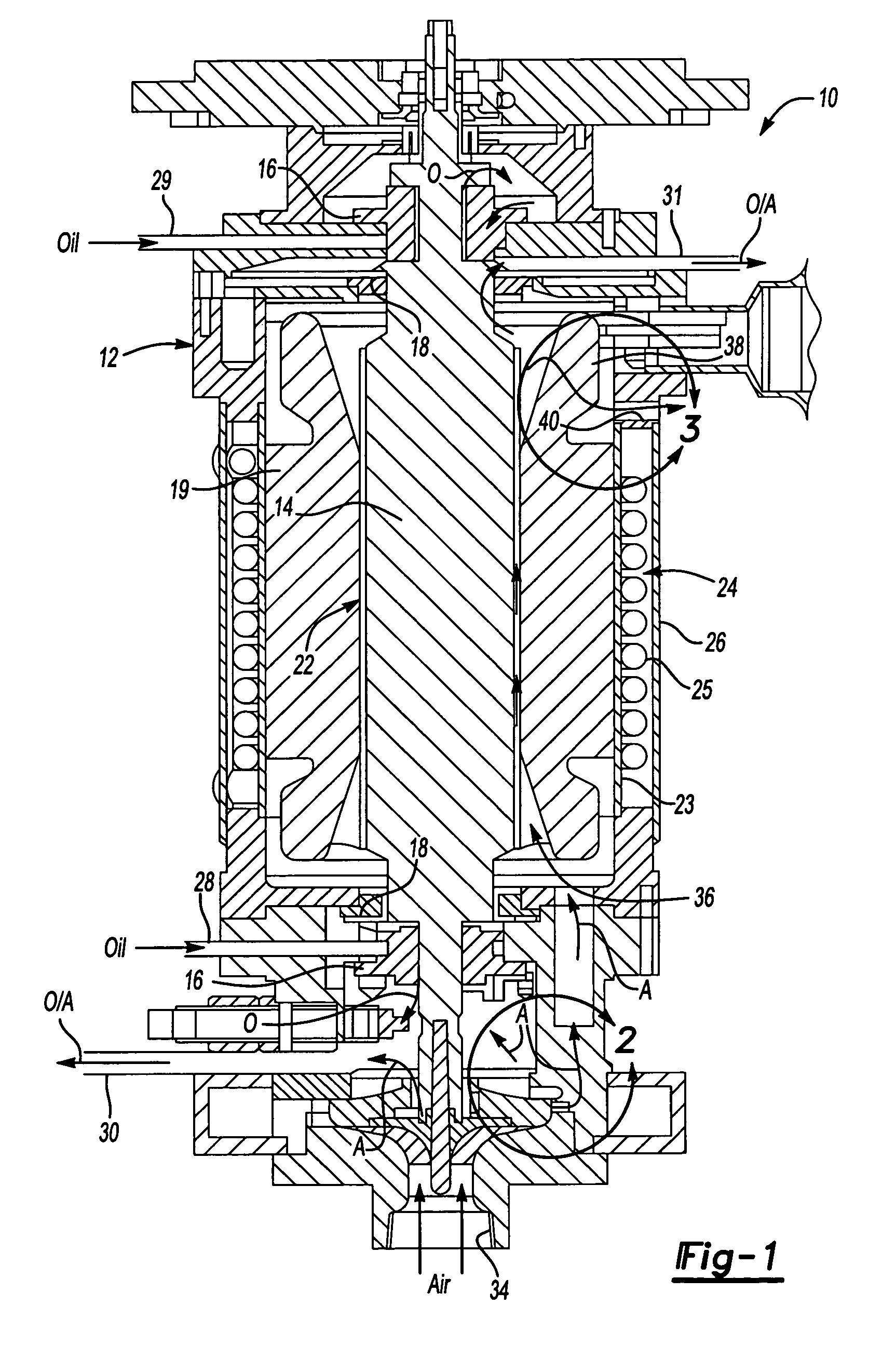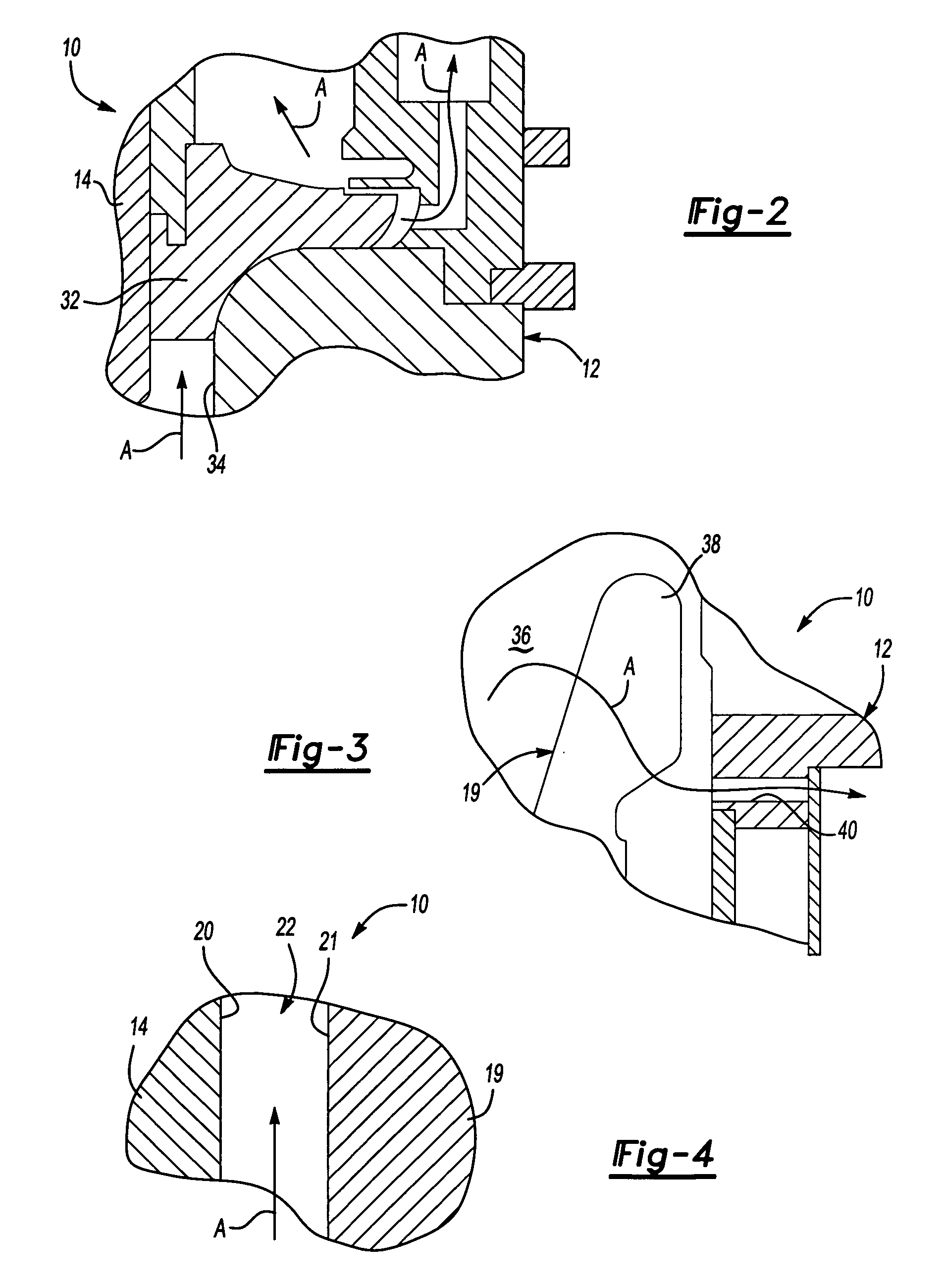Rotary machine cooling system
a cooling system and rotary machine technology, applied in machines/engines, positive displacement liquid engines, pumping machines, etc., can solve the problems of reducing machine efficiency, reducing the efficiency of machines, and generating a significant amount of heat during operation of electromechanical rotary machines such as electric motors or generators, so as to reduce the amount of air, reduce power consumption, and minimize the size of cooling ducts
- Summary
- Abstract
- Description
- Claims
- Application Information
AI Technical Summary
Benefits of technology
Problems solved by technology
Method used
Image
Examples
Embodiment Construction
[0014]An electromechanical rotary machine 10 is shown in FIG. 1. The machine 10 includes a housing 12 with a rotor 14 supported within the housing 12 by bearings 16 arranged at either end of the rotor 14. The housing 12 may include one or more components secured to one another. Oil seals 18 are arranged between the housing 12 and rotor 14 and are located further inward of the bearings 16. It should be understood that additional bearings and seals may be used in the machine 10. A stator 19 is disposed within the housing 12 and is arranged about the rotor 14. The machine 10 may be a generator in which case the rotor 14 is driven about its axis to generate an electrical current in the stator 18. Alternatively, the machine 10 may be a motor in which current flows through the stator 19 generating a magnetic field in the rotor 14 to effect rotation of the rotor 14 about its axis.
[0015]The rotor 14 includes an outer surface 20, and the stator 19 includes an inner surface 21 adjacent to the...
PUM
 Login to View More
Login to View More Abstract
Description
Claims
Application Information
 Login to View More
Login to View More - R&D
- Intellectual Property
- Life Sciences
- Materials
- Tech Scout
- Unparalleled Data Quality
- Higher Quality Content
- 60% Fewer Hallucinations
Browse by: Latest US Patents, China's latest patents, Technical Efficacy Thesaurus, Application Domain, Technology Topic, Popular Technical Reports.
© 2025 PatSnap. All rights reserved.Legal|Privacy policy|Modern Slavery Act Transparency Statement|Sitemap|About US| Contact US: help@patsnap.com



